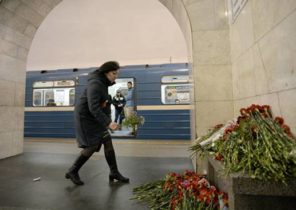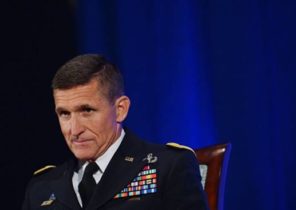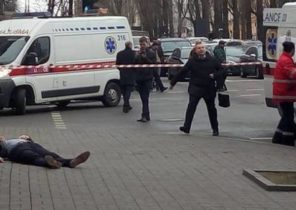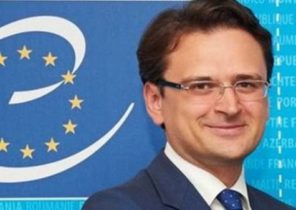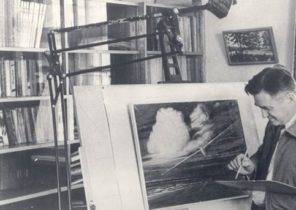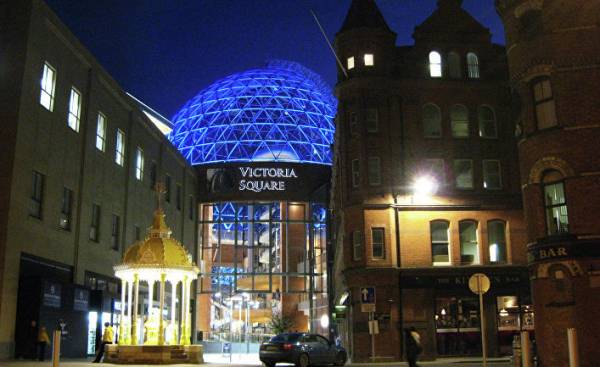
April 29, in the last minutes of the extraordinary summit of EU heads of state in Brussels, the participants almost without discussion adopted a resolution which became known as the “text” Kenny. 27 Prime Ministers and presidents (British leader Theresa may has not called, since the main issue on the agenda was the European strategy for the negotiations on bracito) applauded themselves, unanimously approving the proposed Irish Prime Minister Kenny Andoy text. The meaning of the resolution as adopted is as follows: if the people of Northern Ireland will vote for the accession of the southern part of the island, they will automatically become part of the EU, despite Britain’s withdrawal from the European Union.
In principle, in London have started to get used to such unpleasant surprises from the continent — they are in the last month happen about once a week. The future of Gibraltar is dependent on the position of Spain, that Britain may have to pay for access to 60 billion euros, then suddenly — STO, and thus any negotiations on trade relations can begin only after the recognition of this debt. It came already to the point that the head of the European Commission Jean-Claude Juncker announced that Mrs. may “living in another galaxy” (funny rhymes with the famous phrase of Angela Merkel, Vladimir Putin lives in a different planet). And everyone is like “text” Kenny, statements about the fate of significant portions of foreign territory — not the most normal thing in diplomatic parlance.
The line of peace and brekzita
Fortunately, it’s still not a casus belli — a resolution of the EU summit refers to the fundamental to Northern Ireland’s good Friday Agreement, on which the future unity of the two parts of the island depends primarily on the expressed direct will solve their population, and the British government, in addition to the obligation to assign the vote to a time when the idea of unification finally capture most of the superorganized, special effects has not.
This striking and hard-earned document, signed by London, Dublin and the leaders of the main Northern Irish parties in 1998, and then approved by the two Irish referendums, preparing for, however, given the fact that all the participants in any case are in the EU. In the end, despite the fact that Northern Ireland is by a wide margin the smallest of the four countries of the United Kingdom, this is where the process brekzita waiting for, probably, the greatest difficulty. That certainly is not in any doubt — is that the risks in case of failure, there is a maximum.
The history of the island of Ireland is not only one of the most intricate and tragic in the Christian world, but also one of the most lively, that is, having a strong influence on the everyday life of modern citizen. Even if we consider only directly connected with the current story with facts, you still have to start from 1170 when the Irish landed the first Anglo-Norman contingent.
The ensuing 750 years of English colonization was associated with a recurring attempts to oust the island’s indigenous population and replace it by immigrants from Britain. For various reasons they were successful only in the Northern province of Ulster, and when in 1921, the devoutly Catholic Ireland finally gained independence, the six Northern counties with a predominantly Protestant population, remained part of the UK.
Since 1969, Northern Ireland was the conflict between radical unionist and Republican groups, known in English as the Troubles (“troubles”). The total number of victims has exceeded 3,500 people, and gone with him was precisely because of the good Friday Agreement.
In the current Northern Ireland the memory of this story (besides the government, the results of any election and the psychology of the entire population) is stored in the form of two very different boundaries. In city centres and adjoining the Protestant and Catholic neighborhoods are still separated by heavy concrete walls, hypocritically called “peace lines”.
Pyatisotletny the border between the two parts of the island (actually, the only land border of the United Kingdom), on the contrary, I was amazed at how invisible it is: understand that you’re not in the UK, it is possible only by the fact that the speed limit on the road signs suddenly begins to appear in miles and in kilometers per hour. It is the fate of this border and its current permeability is one of the main reasons for concern due to brekzita, because it can be not just interstate, but the outer border of the common customs area and the Common market of the EU.
A separate problem is the current state of Affairs, does not involve the question of EU membership is the fact that the main unionist and Republican parties of the province, which under the good Friday Agreement are required for a couple to form a government, strongly quarreled in early 2017 on the grounds of a corruption scandal in the field of housing, and even new elections to resolve this conflict. Finally, the results of the referendum of June 23, 2016: 56% of superorganized voted on it to stay in the EU, while in the whole United Kingdom 52% supported brickset.
Ireland — not Scotland
In this rather difficult background, the interest of the Irish Prime Minister End Kenny to the possible early Association of his native island is clear, but the data of sociologists for him disappointing: according to the results conducted in the fall of 2016 polling company Ipsos Mori, 63% of the population of Ulster would prefer to stay with London, and only 22% choose a United Ireland.
The number of supporters of unification, though increased by 5% in 2013, still not so great, and even the idea of a referendum supports only 33%. It is particularly interesting that only every fifth of respondents said that the results of the referendum on breckside somehow influenced his preferences regarding the future of the province and even among Catholics (who now account for about half of the total population) enthusiasts of Irish unity only 43%.
An additional story line in the Northern Irish question provides the prospect of a referendum on Scottish independence and generally observed the exacerbation of national identity. It just really seems that the three small countries of the United Kingdom of England is bound to a separate thread and does not interact with each other. In fact, with the tops of the rocks of Antrim in clear weather is visible no not England, and Scotland. The Protestant population of the province mostly derives from it, professes not Anglicanism, a Scottish Presbyterian, and speaks the dialect of the English language, which is transparently called Ulster-Scots.
In the case of separation of Scotland and Northern Ireland will be enough associated with Britain and Wales even purely geographically — but the same poll by Ipsos Mori showed just the same paradoxical result: the independence of Scotland will make a closer look at the Irish Association only 15% of the population of Ulster, and 18%, on the contrary, expect yourself in this case, the tide of British patriotism. To explain this phenomenon logically impossible, and can only refer to the mysterious Northern Irish soul. Or that, answering the questions of sociologists, people do not always accurately predict their reaction to future events.
Despite all of these encouraging to preserve the integrity of the United Kingdom the results of the surveys, there is no guarantee that the peace in Ulster — a thing irreversible. This, of course, not a reason to cancel brickset (but this is already impossible), but the situation on the “lines of peace” is clearly to be one of the major concerns of governments and Theresa may, and Ends Kenny.
One of the most memorable passages in “the World crisis” Winston Churchill describes how, on 24 July 1914 the British Cabinet receives a message about the Austro-Hungarian ultimatum to Serbia in the midst of discussions on how the boundary should pass between the Northern and southern parts of Ireland. In their traditional colorful style, Churchill writes: “Rural parishes in counties Fermanagh and Tyrone retreated back into the mists and vortices of the dank of Ireland, and a strange light began slowly but noticeably to flare up over deployed before us a map of Europe.” One hundred years later, the chilly Ireland suddenly found himself not on the periphery, and in the midst of another world crisis, and decide he will, at least partly, in the rural parishes of counties Fermanagh and Tyrone.
